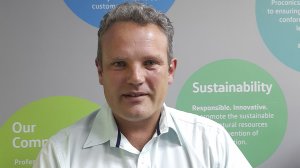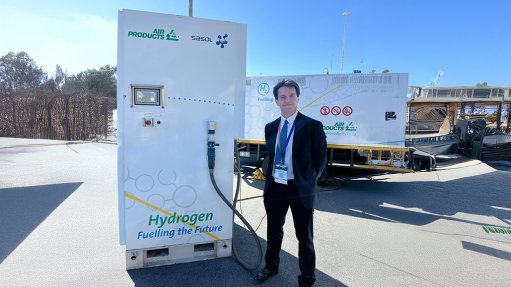Too FAT or in perfect shape?
Earlier this year I was very excited to plan a trip abroad. What excited me even more was that this trip was paid for by the company. This trip was for a FAT (Factory Acceptance Test) of long lead equipment that was manufactured according to specific detail designs. In my excitement to travel abroad, the FAT became a side hustle, and the focus was on setting up an itinerary of tourist attractions and places I wanted to visit during this FAT.
AFAT is a series of tests performed on equipment and systems, prior to installation at the customer’s site. FAT is mostly performed by the technical team and quality controllers, and not the project managers. In this case an exception had to be made due to the client’s cancellation and the plan for the FAT was based on two individuals executing the work. This time, the project manager was the best person to step in and save the day with his valid passport and knowing that without the client present, 100% of the responsibility shifted to the team doing the FAT.
As a project manager I am often asked why we are still doing a FAT when manufacturers and suppliers already comply with all the industry standards and quality certifications. The supplier is ultimately responsible to guarantee quality, and I wondered if the mitigation cost to do a FAT on this type of equipment is still justified. The cost and effort to conduct a FAT are sometimes high when compared with the actual price of the equipment. This often raises the question if this risk mitigation1 cost is justified when the cost to replace the equipment is very low. As a project manager, the FAT is not only the additional cost but sometimes a burden on the planning. Especially when the team attending to the FAT is talking more about their itinerary than the FAT.
The Covid period opened a door for new technologies and methods of working remotely. Project managers were forced to turn to alternative methods when countries were still under lockdown and traveling was prohibited. FATs were done online by video call and photos which created new challenges, like the quality of video and photos, the number of photos, or missing information, because the supplier might unintentionally miss some details that they think are not important. The risks of not attending a FAT were mitigated by implementing a second FAT to inspect the equipment when delivered. Although the risk of installing incorrect or faulty equipment is mitigated by a FAT, there is an increased risk of damaging the equipment because of double handling, as well as increased costs to arrange a second FAT.
Now that Covid times are done, and traveling is open again, as project manager, I am tempted to save cost on projects by doing online FATs. We decided to attend a FAT in person at a very reputable company that manufactures high-quality products, and high levels of standards, and yet at the FAT we discovered a deviation that would have been missed by a virtual FAT because there was no way that you can view the length of the piece of equipment in one picture or even track on a video. The magnitude of the equipment required a big picture concept to pick up any possible deviations.
The delivery date of the equipment was delayed by two weeks. Fortunately, the schedule had enough float between delivery and installation and the delay was accepted without any impact on the project cost or completion date. This is when I realised that the cost spent on this FAT was worth every cent. If there was no FAT or if the deviation were not discovered during an online FAT the product would have been packed, crated and delivered to the site and only removed from the packaging during the installation phase. The project impact would have been totally different. The two week delay could easily have escalated to four weeks, with extra time to send the equipment back to the manufacturer and there would have been no float on the schedule, meaning that the completion date would have been delayed. It felt like we dodged a bullet; however, in reality the FAT (risk mitigation) paid-off. Even with penalties and guarantees, the losses in delaying the overall project would outweigh all these recovery costs multiple times.
As the client, I would include the FAT to all project requirements. These costs are not part of quality, but rather categorised as project risk mitigation actions. The FAT is a critical step in the execution of a project and should be planned accordingly. Technology opens the door for virtual FAT, it does not only save costs and time but it enables more people to inspect the equipment before shipment. As the project manager I would still implement physical FATs when it comes to first-of-kind and/or custom/specific equipment, because you don’t know what you don’t know, until you feel and touch the equipment in real life. There is more than just the “yellowing-off2” of the design drawings during a FAT. The tacit knowledge within the team to identify any practicality or constructability challenges is priceless. All FATs must be led by the most experienced and competent team to prevent commissioning delays for installing faulty or wrong equipment.
Jaco Erasmus completed his bachelor's degree in Engineering (B-Eng – Industrial) at the University of Pretoria in 1999. He started his career as a business analyst and in 2007 joined Proconics as the first project manager in the company. In 2014 he was the MD for an E&I Construction company before he started his own business. In 2018 he returned to Proconics as a Senior Project Manager where he recently obtained his PMP certificate and enjoys applying his knowledge and experience in this role at Proconics.
Comments
Press Office
Announcements
What's On
Subscribe to improve your user experience...
Option 1 (equivalent of R125 a month):
Receive a weekly copy of Creamer Media's Engineering News & Mining Weekly magazine
(print copy for those in South Africa and e-magazine for those outside of South Africa)
Receive daily email newsletters
Access to full search results
Access archive of magazine back copies
Access to Projects in Progress
Access to ONE Research Report of your choice in PDF format
Option 2 (equivalent of R375 a month):
All benefits from Option 1
PLUS
Access to Creamer Media's Research Channel Africa for ALL Research Reports, in PDF format, on various industrial and mining sectors
including Electricity; Water; Energy Transition; Hydrogen; Roads, Rail and Ports; Coal; Gold; Platinum; Battery Metals; etc.
Already a subscriber?
Forgotten your password?
Receive weekly copy of Creamer Media's Engineering News & Mining Weekly magazine (print copy for those in South Africa and e-magazine for those outside of South Africa)
➕
Recieve daily email newsletters
➕
Access to full search results
➕
Access archive of magazine back copies
➕
Access to Projects in Progress
➕
Access to ONE Research Report of your choice in PDF format
RESEARCH CHANNEL AFRICA
R4500 (equivalent of R375 a month)
SUBSCRIBEAll benefits from Option 1
➕
Access to Creamer Media's Research Channel Africa for ALL Research Reports on various industrial and mining sectors, in PDF format, including on:
Electricity
➕
Water
➕
Energy Transition
➕
Hydrogen
➕
Roads, Rail and Ports
➕
Coal
➕
Gold
➕
Platinum
➕
Battery Metals
➕
etc.
Receive all benefits from Option 1 or Option 2 delivered to numerous people at your company
➕
Multiple User names and Passwords for simultaneous log-ins
➕
Intranet integration access to all in your organisation



















